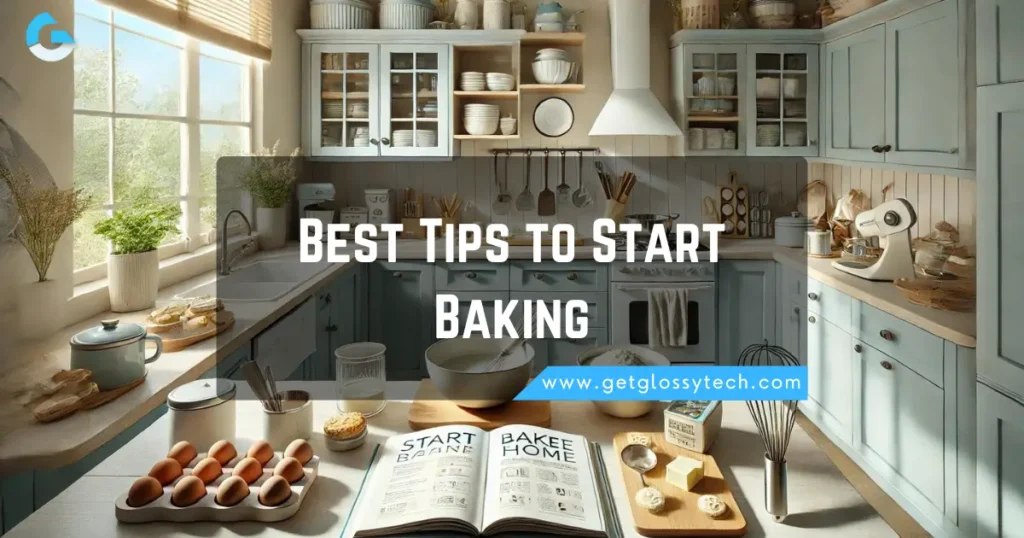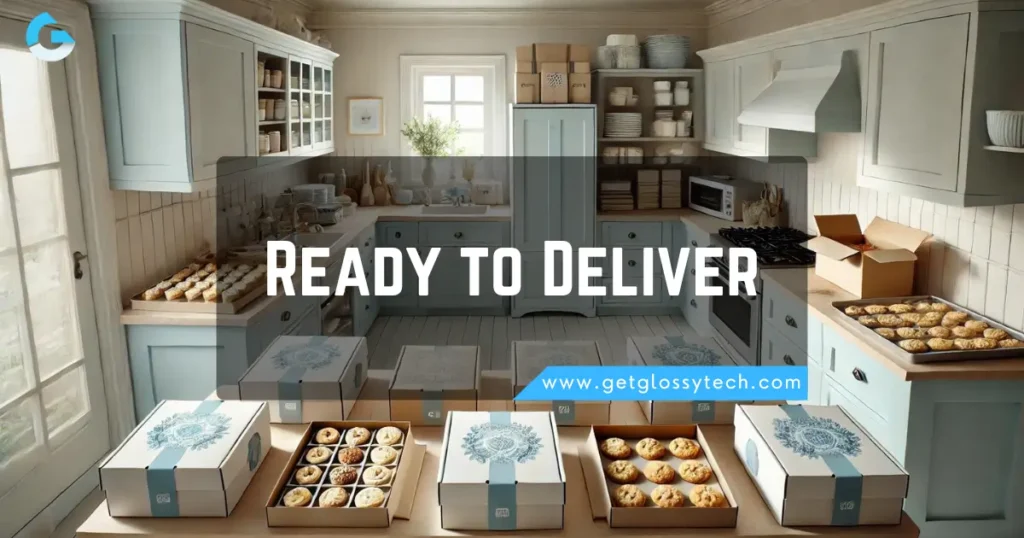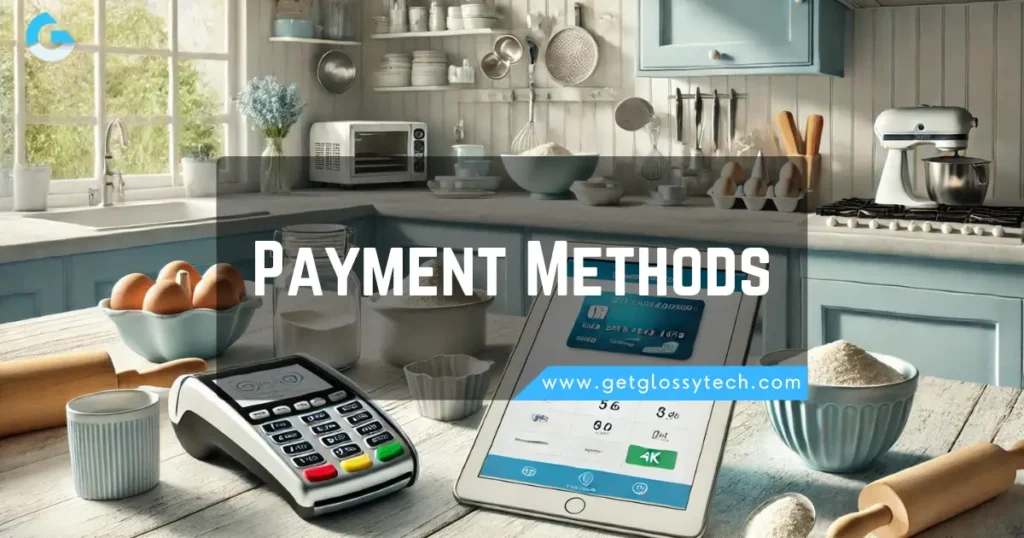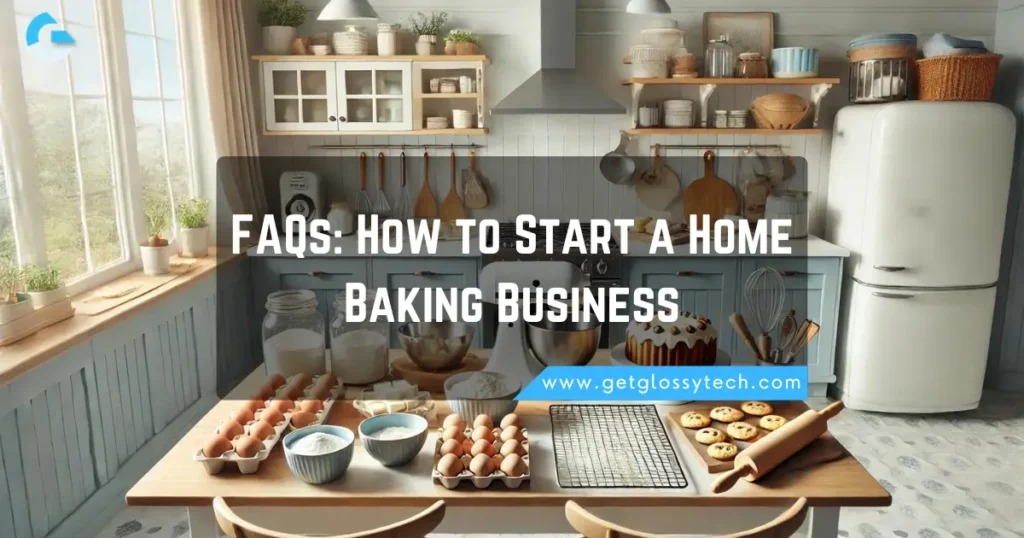How To Start A Home Baking Business

Starting a home-based baking business can be an exciting journey for those with a passion for baking. Whether you dream of making decadent cakes or chewy cookies, there are several key aspects to consider. Home baking offers the flexibility to work from your own kitchen, allowing you to balance time and resources effectively while turning your hobby into a small business.
Turning Your Passion into Profit
When launching a small-batch bakery, it’s crucial to understand both the production and retail aspects. Begin by mastering small-batch techniques for treats like chocolate chip cookies or banana bread. Utilise overripe bananas or add a twist with currant scones to create unique offerings.
Crafting these treats at home ensures you can control quality and manage profit margins. To stand out, consider starting as a home-based business before expanding to a storefront. This approach allows you to gradually grow, manage employees, and enhance your experience while keeping overhead low.
By focusing on high-quality bakes and effective production strategies, you can transform a passion for baking into a successful business. This practical guide helps you navigate the essentials of starting and running a home-based bakery, ensuring you’re prepared to become a true powerhouse in the world of small food businesses.
Having A Home Bakery Would Be a Fun

Running a home bakery can be incredibly fulfilling and enjoyable. Creative passion for baking treats like cakes, cookies, and cupcakes brings a lot of joy. With the right experience and a bit of optimism, you can turn your hobby into a successful home bakery business. Imagine starting your day decorating a fresh batch of cakes or whipping up 500 cookies for a special order.
However, there’s more to it than just the fun of baking. Many face the misconception that a home-based business is an easy way to get rich. In reality, managing a cake business involves understanding finances, business expenses, and regulations.
Incorporate marketing strategies and sales tips to help your home bakery stand out. Ensure that you are prepared for the practical aspects like taxes and regulations. Embrace the opportunity with an entrepreneurial spirit, and you’ll find that the fun of baking can also lead to success.
Embracing the Baking Dream
Starting a Home Bakery Business can turn your creative passion into a thriving career. Diving into the world of baking cakes, cupcakes, and cookies at home combines passion with fun and profit. It’s crucial to manage your finances wisely and consider business expenses like taxes and supplies.
Marketing your tasty treats effectively is just as important as perfecting your decorating skills.
Overcoming Challenges in Home Baking

Transitioning from a day job to running a full-time bakery from home can be filled with challenges—from family concerns to meeting regulations.
Many overlook the importance of understanding food safety and local business regulations, which are vital for turning your home bakery into a legitimate enterprise. Addressing these early can prevent the fear of failure and foster success.
By recognizing the realities of home baking and preparing adequately, you can ensure your bakery thrives. This guide helps you navigate from initial enthusiasm, through common misconceptions, to established sales tips, setting you on the path to living rich in experience and fulfilment.
What is the Best Way to Sell Home-Baked Goods?

To successfully sell homemade treats like cakes, cookies, bread, and brownies, it’s essential to plan your home bakery business carefully. Start by offering a range of baked goods and decide whether you want this to be a side hustle or a full-time job.
Each approach requires different strategies for planning and process. Bakers can use various methods to sell their baked goods:
- Set up an online store or use social media to reach potential customers.
- Participate in local farmers’ markets or craft fairs to showcase your treats.
- Leverage word-of-mouth referrals from satisfied customers.
If you’re balancing this with a full-time job, focus on building a strong local presence and gradually expanding your business. Managing a home bakery business involves answering several questions about operations, such as how to handle business logistics and processes.
Addressing these key areas with thoughtful planning will set you up for success and ensure your baked goods are in high demand.
LET’S TALK BAKERY BUSINESS EXPENSES

When starting a home bakery business, understanding your expenses is crucial. As a product-based business, you’ll need to buy or make everything from ingredients to packaging and labelling. These costs can add up quickly, especially if you aim to maintain a high level of quality and professionalism in your products.
Managing these costs effectively is key to running a successful bakery. To maximise your profit margin, find the best prices for your supplies without compromising on the aesthetic or quality of your products. This is not just a hobby; it’s a business, and every penny counts.
Don’t forget to factor in indirect expenses such as electricity, gas, and TIME. These are often overlooked but can impact your bottom line. Paying yourself a fair wage based on your skills, market, and personal values is also essential. Regularly conducting an analysis of all costs will help you adjust your prices to ensure profitability.
Best Tips to Start Baking At Home

Legally Clear Business
Starting a home-based bakery involves ensuring your business is legally compliant. Begin by understanding your local and state laws regarding cottage food and business licensing. Each area may have different legal stipulations for selling baked goods.
- Cottage food laws often allow you to produce shelf-stable products at home, but these laws vary by state.
- Check with local health departments to ensure you meet sanitation requirements and obtain necessary licences, such as a food manager licence.
- Consider whether you need a Business Entity like a limited liability company (LLC) or if you will operate as a sole proprietor.
- Secure an insurance policy to cover potential risks and banking needs, such as opening a business bank account to manage finances and taxes.
Direct-to-consumer sales from a home bakery often have limitations compared to commercial operations, so be aware of sales limitations. If you plan to scale or sell through a grocery store or retail storefront, you might need a production kitchen and additional equipment.
Properly handling food tax and sales tax is essential for compliance with local taxes and state taxes.
Pricing Strategies

Setting the right prices for your home bakery involves careful calculation. Begin by determining the cost of each batch of baked goods. This calculation should include ingredients like flour, sugar, eggs, butter, and baking soda.
Additionally, factor in labour costs and overhead costs such as monthly overhead, business fees, and variable fees like packaging and labels.
Balancing Costs and Customer Expectations
When determining prices, it’s crucial to balance covering your costs while offering value that attracts customers. Calculate your cost per batch and cost per cupcake using a spreadsheet to keep track of expenses and ensure you maintain a healthy profit margin.
Include farmers’ market fees and cooking needs like parchment paper and cupcake liners in your calculations.
Navigating Customer Interactions
Handling pricing discussions with potential customers can be challenging. It’s important to be prepared for negotiations and understand that some customers may have a haggling mentality.
By clearly communicating the quality and luxury of your products, you can justify your prices and minimise the need for discounts. Always aim to establish a sales price that reflects the value and effort put into your products.
Marketing Your Bakey Business

In today’s digital age, effective marketing is crucial for any business, especially a home baking business. If you have a local social media following, it can significantly help you scale your business quickly. However, without this asset, you may find your business growth to be slow.
To kickstart your home bakery, you need to be proactive. Simply opening your doors and hoping for orders isn’t enough. Utilise social media to create buzz and show off your home-baked goods. This direct engagement can encourage your local community to try your products and support your business.
Even if you are just starting and don’t have a large following, there are still plenty of ways to operate your marketing effectively. Consider local collaborations, participate in community events, or even create special promotions to attract attention. The goal is to make people aware that you are open for business and ready to serve delicious treats.
Plan Your Menu

Creating a menu for your home-based bakery requires understanding what sells and adhering to local laws. Start by selecting a range of products like cookies, breads, muffins, cupcakes, and cakes.
These items must be shelf-stable or suitable for refrigeration if necessary, which increases flexibility in storage and selling locations, such as farmer’s markets.
- Boss your bakery’s offerings by including special items like biscotti or offering pre-cut slices of banana bread alongside a whole loaf.
- A predetermined menu helps streamline ingredients purchase and production processes, making it easier to manage during busy periods.
Further, enhance your menu by gaining skills from educational programs like the Baking & Pastry Arts online program at Auguste Escoffier School of Culinary Arts. Such education enhances your techniques and prepares you better for the variety and challenges of home kitchens for aspiring home-based bakers.
Get Your Equipment and Supplies

Setting up your personal kitchen for a home baking business means investing in the right equipment and supplies. Essential items include cake tins, muffin tins, bread tins, and cupcake wrappers, along with piping bags and various tips for decorating. These tools will help you produce your offerings efficiently and with professional quality.
Consider the cost and price of these supplies, ensuring you balance quality with budget constraints. Purchasing durable equipment can save money long-term, even if the initial cost is higher. Also, remember to account for extra space needed in your kitchen to accommodate these tools.
Your selection of equipment and supplies should align with your menu needs. If you plan to offer an assorted range of baked goods, ensure you have the specific tins and wrappers for each product. This strategic alignment helps in maintaining consistency and meeting customer expectations.
Naming Your Bakery

Choosing the right business name for your bakery is a critical step in establishing your identity in the baking business. A good name should be easy to spell and easy to pronounce, ensuring it’s memorable and readily found through an online search. This makes it easier for potential clients to discover and share your brand.
Your bakery name should also be unique and not too specific, allowing you room to expand and evolve your home bakery offerings without restrictions. Before settling on a name, make sure to register it and check for any existing trademarks to avoid legal issues.
The name you choose sets the tone for your brand, influencing the vision and principles your business stands for. Beyond just a memorable name, your branding design, creating a stunning website, food photography, and copywriting on platforms like emails and Facebook posts, must communicate your bakery’s value as the solution to your clients’ needs.
Promote Your Business

Effective promotion of your baked goods is crucial for attracting and retaining customers. Utilise social media platforms like Instagram, Facebook, and TikTok to post appealing images and videos of your products, such as frosted cookies and cakes.
Highlight weekly specials and engage with your audience through interactive content like giveaways and behind-the-scenes baking videos.
Leveraging Local Markets
Setting up a stand at a local farmers market can significantly increase your foot traffic. This direct interaction offers an excellent opportunity to provide free samples, perhaps of popular items like macarons, and to implement loyalty programs such as punch cards where customers can “buy 9 cookies and get one free”. Such tactics help build a base of loyal customers.
Seasonal and Community Engagement
Additionally, consider the power of local hashtags and Facebook groups to connect with potential buyers in your area. Seasonal promotions during fall or the holidays, and participating in vendor events or setting up a pop-up shop, can further reach and engage local communities, boosting your sales.
Ready to Deliver

When you’re set to sell your baked goods, consider the various platforms and locations available. Home bakers often find great success selling onsite at events like farmers’ markets and county fairs. Here, you can showcase your beautifully packaged treats directly to customers who appreciate the homemade touch.
For those exploring digital avenues, selling your goods online by creating your own website or social media can expand your customer base. This method allows customers to place orders throughout the week, making it more convenient for both you and them.
Navigating through local and state regulations is crucial, as these will dictate where and how you can sell your home-based bakery goods. Compliance with these regulations ensures smooth operation and helps build trust with your buyers.
Payment Methods

Choosing the right payment methods for your home baking business is crucial to ensure smooth transactions. Offering multiple options such as cash, credit cards, and digital payments can accommodate a broader range of customers.
- Set up a merchant account to handle transactions; consider the associated fees, whether flat fee or percentage-based.
- For in-person sales, utilise a credit card reader and offer digital payment options for online orders to enhance flexibility.
Utilise invoicing software for managing invoices for wholesale accounts or custom orders. Sending invoices via email ensures professionalism and clarity in financial interactions.
How Can I Build My Home Bakery Customer Base?

Building a customer base for your home bakery business is crucial for long-term success. One effective strategy is to ask current customers for reviews and testimonials. This helps new customers feel more confident about ordering from you, as they see the positive experiences others have had.
Another key approach is to actively promote your business locally. Regularly share your business card at community events and ensure your business is listed and verified on Google. This increases visibility and makes it easier for potential customers to find you.
For those inspired by shows like The Great British Bake-Off, turning your love of baking into a career means making a commitment.
Whether you’re an amateur baker looking to go pro or a novice just testing the waters, establishing a strong customer base is foundational to becoming a professional baker.
Steps Make You More Valuable

Choose items that you enjoy baking and that fit well within your local market’s preferences. Popular choices include bagels, cream puffs, and cornbread, but don’t overlook whoopie pies and red velvet cake if you’re aiming to stand out.
Next, gather the necessary equipment and supplies. This includes baking essentials like cake pans, muffin tins, and cookie sheets, as well as ingredients such as flour, sugar, and butter.
Ensure you have fresh ingredients and the right tools to produce high-quality desserts, cakes, and cookies. You’ll need to keep track of these items, especially if you’re managing inventory for items like bread, biscuits, and sweet rolls.
When it comes to setting your prices, consider your costs for ingredients, labour, and overhead. Pricing your baked goods correctly will help you promote profitability. For instance, brownies and cupcakes might have different pricing structures compared to cheesecakes and pies due to varying ingredient costs and preparation time.
How to Expand Your Business

Establish an Online Presence
Creating a website for your home baking business is more than just an online trend; it’s a crucial tool to showcase your creations and connect with customers. A well-designed website acts as your digital storefront, allowing potential customers to discover your menu, place orders, and get a taste of your brand’s personality.
This platform not only increases your visibility but also offers a space where customers can interact with your business 24/7.
Leverage Social Media Marketing
Utilising social media platforms is essential for amplifying your bakery’s reach and engagement. Platforms like Instagram and Facebook are perfect for sharing high-quality images of your baked goods, promoting special deals, and hosting live baking sessions.
These interactions not only enhance customer engagement but also drive traffic to your website, creating a cohesive digital marketing strategy that can significantly boost your business growth.
Optimise for Local SEO
To attract more local customers, optimising your website and social media for local search engine optimization (SEO) is key. Include local keywords, register your business on Google My Business, and encourage satisfied customers to leave positive reviews.
This boosts your visibility in local search results, making it easier for nearby customers to find and choose your bakery when they’re craving something sweet.
By integrating these strategies, you not only enhance your business’s online footprint but also create multiple avenues for customer interaction and sales, all while presenting your brand in a professional and appealing manner.
FAQs: How to Start a Home Baking Business

How to start baking at home?
Starting a home baking business begins with setting up your home kitchen with the right tools and equipment. It’s essential to select high-quality pans and utensils to avoid issues like uneven baking. Ensure you have a precise list of ingredients and reliable recipes that promise consistency and freshness in every batch of baked goods you create.
Next, plan your bakery menu thoughtfully. Focus on items that not only showcase your skills but are also viable to produce in terms of cost and price.
What are 10 bakery foods?
Starting a home baking business can be an exciting venture, offering the flexibility to create a variety of baked goods from the comfort of your own kitchen. Whether you’re interested in selling apple pie, chocolate chip cookies, or blueberry muffins, your first step is to plan your bakery menu carefully.
Choose items that you enjoy baking and that fit well within your local market’s preferences. Popular choices include bagels, cream puffs, and cornbread, but don’t overlook whoopie pies and red velvet cake if you’re aiming to stand out.
Conclusion: How to Start a Home Baking Business

To start a home bakery business, you’ll need to consider both start-up costs and the regulations under cottage foods laws. Whether you plan to operate full-time or part-time, obtaining the necessary permits and licences is essential. Setting competitive prices for your home-baked goods will help attract customers and make your offerings irresistible.
Develop a menu that reflects your niche in the market, and market yourself through various channels, including selling events and pre-order selling. Embrace the role of being your own boss and relish the opportunity to do what you love.
Subscribe to our newsletter for the ULTIMATE Checklist to ensure you don’t miss any steps. You’ll also get access to exclusive content from Featured Bakers, plus recipe ideas, technique tips, product recommendations, and printables to enhance your business and baking skills. Happy Baking, besties!

